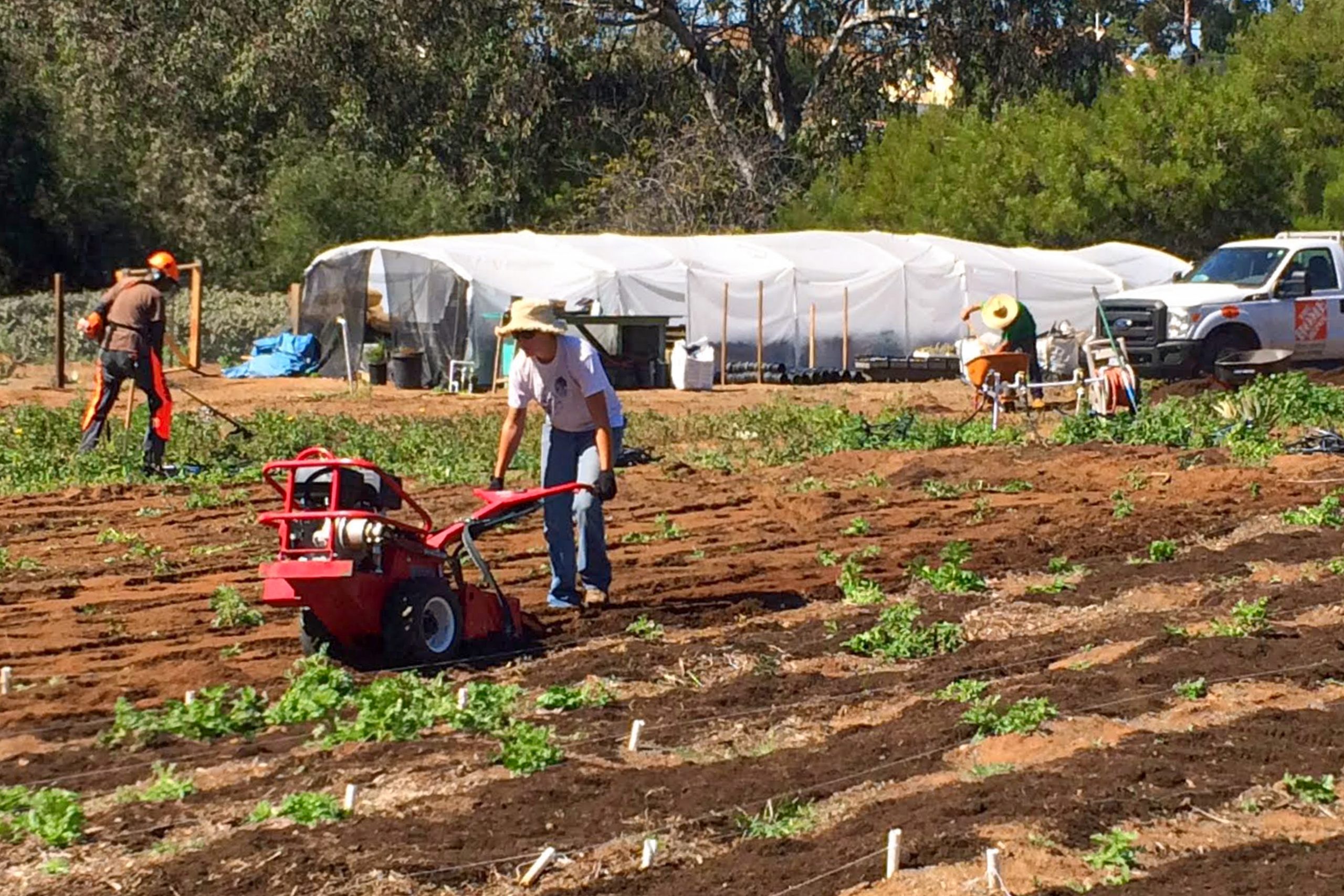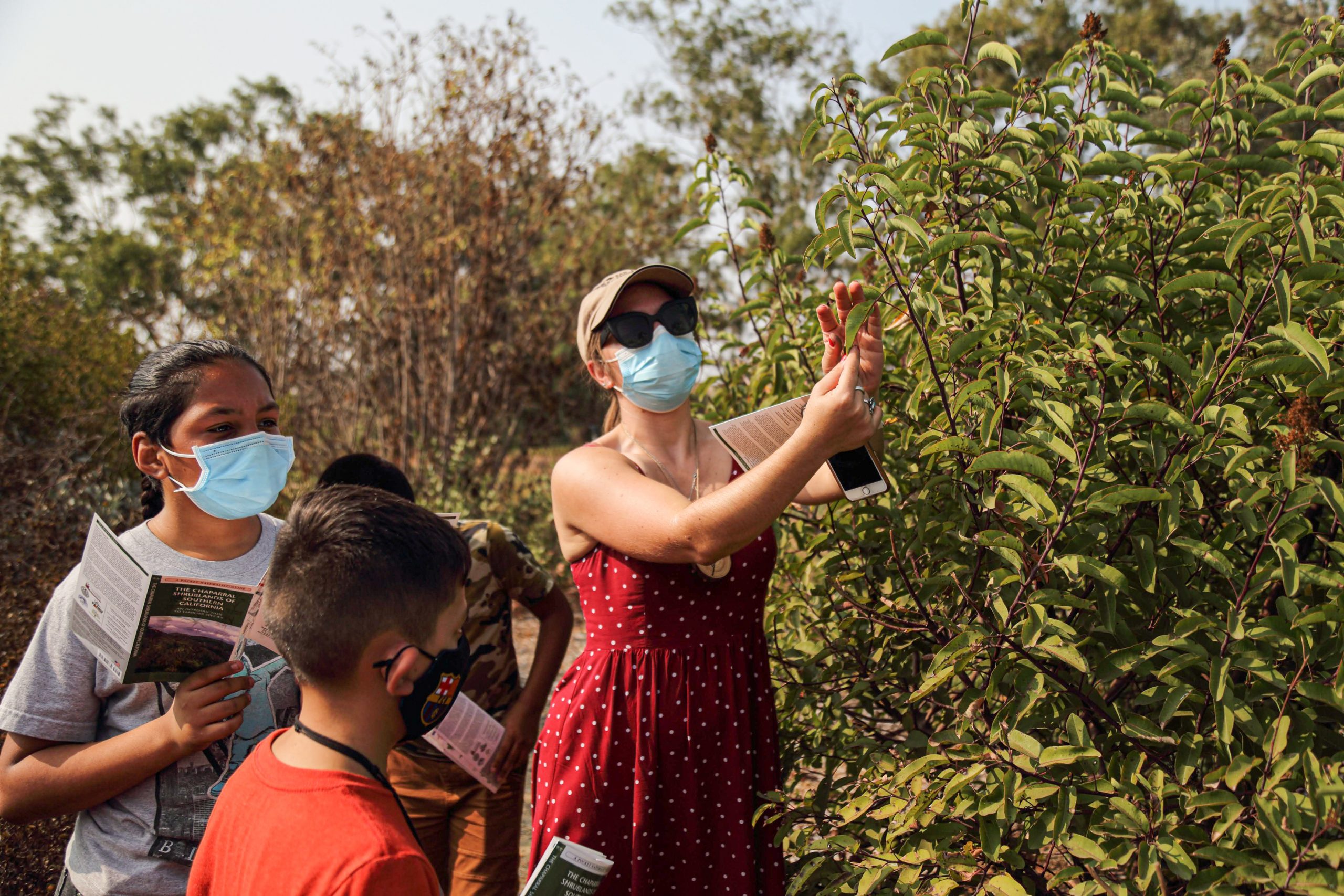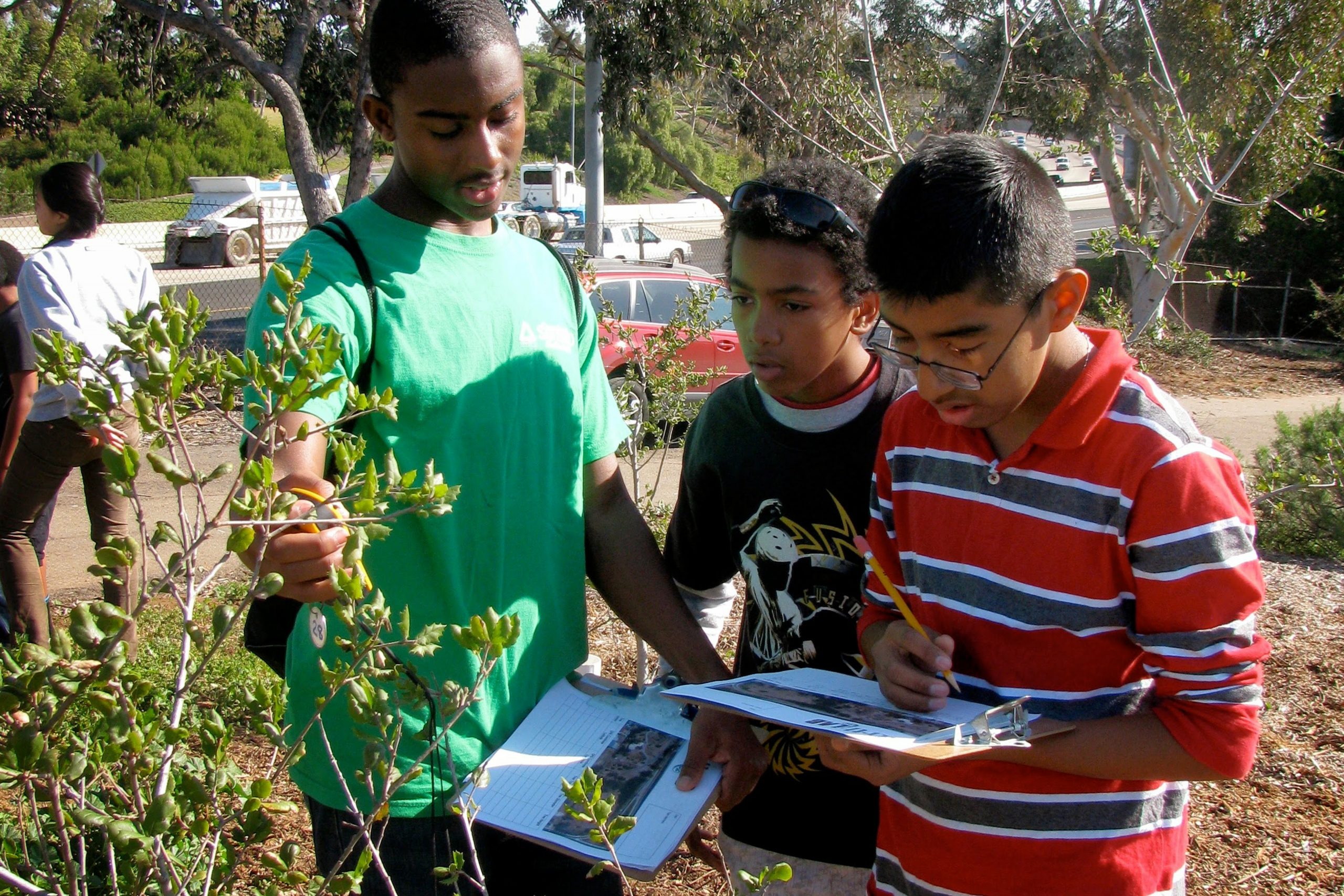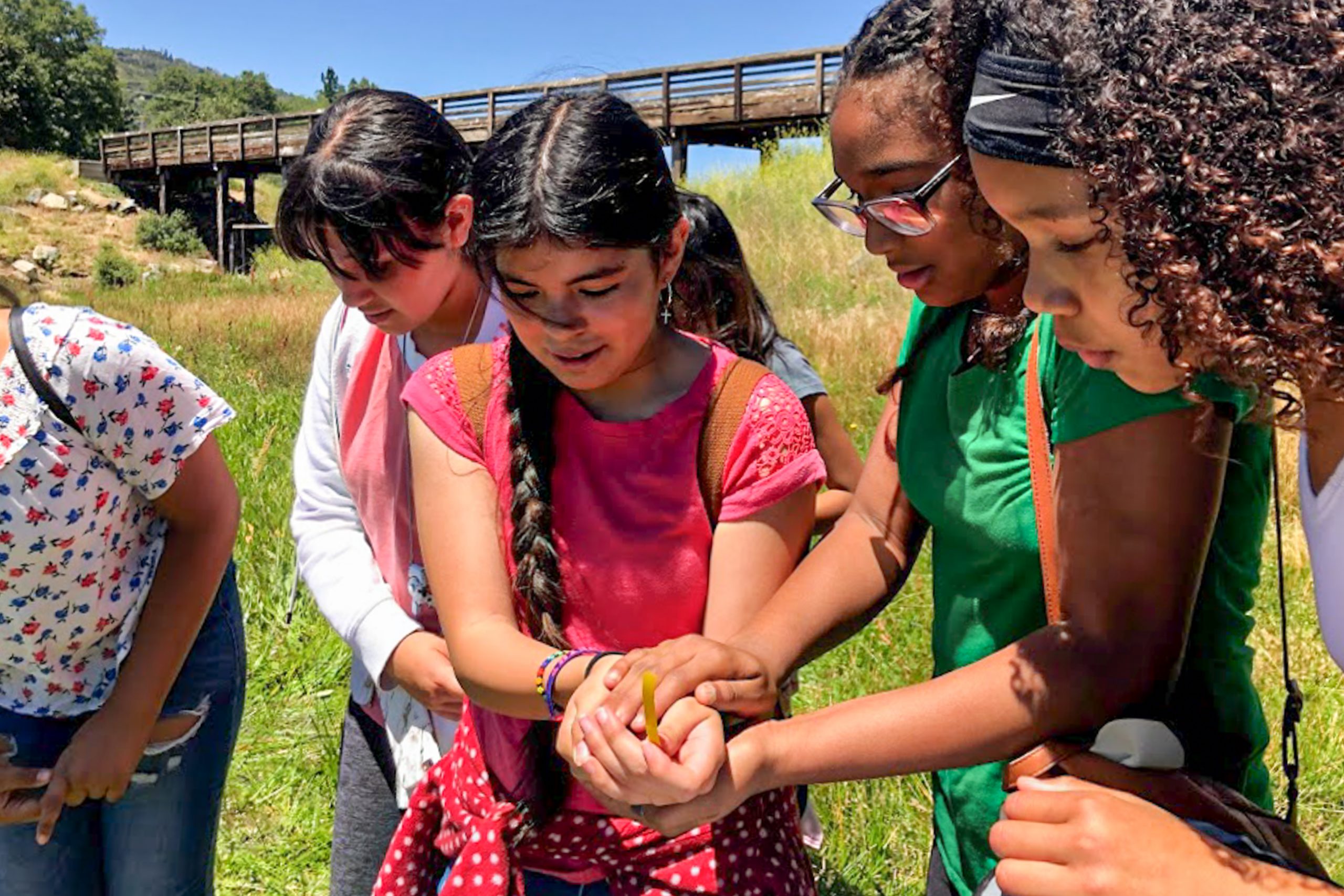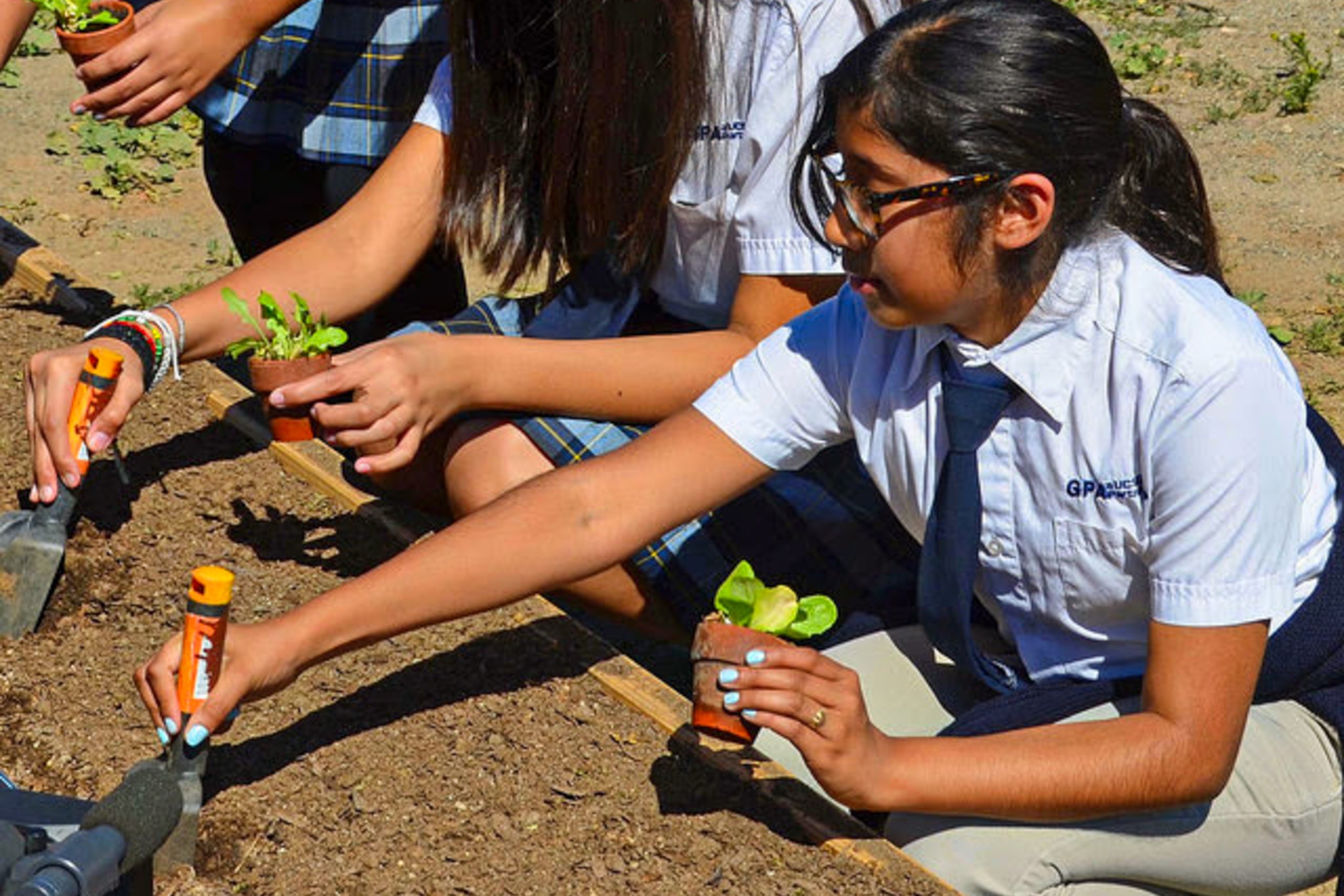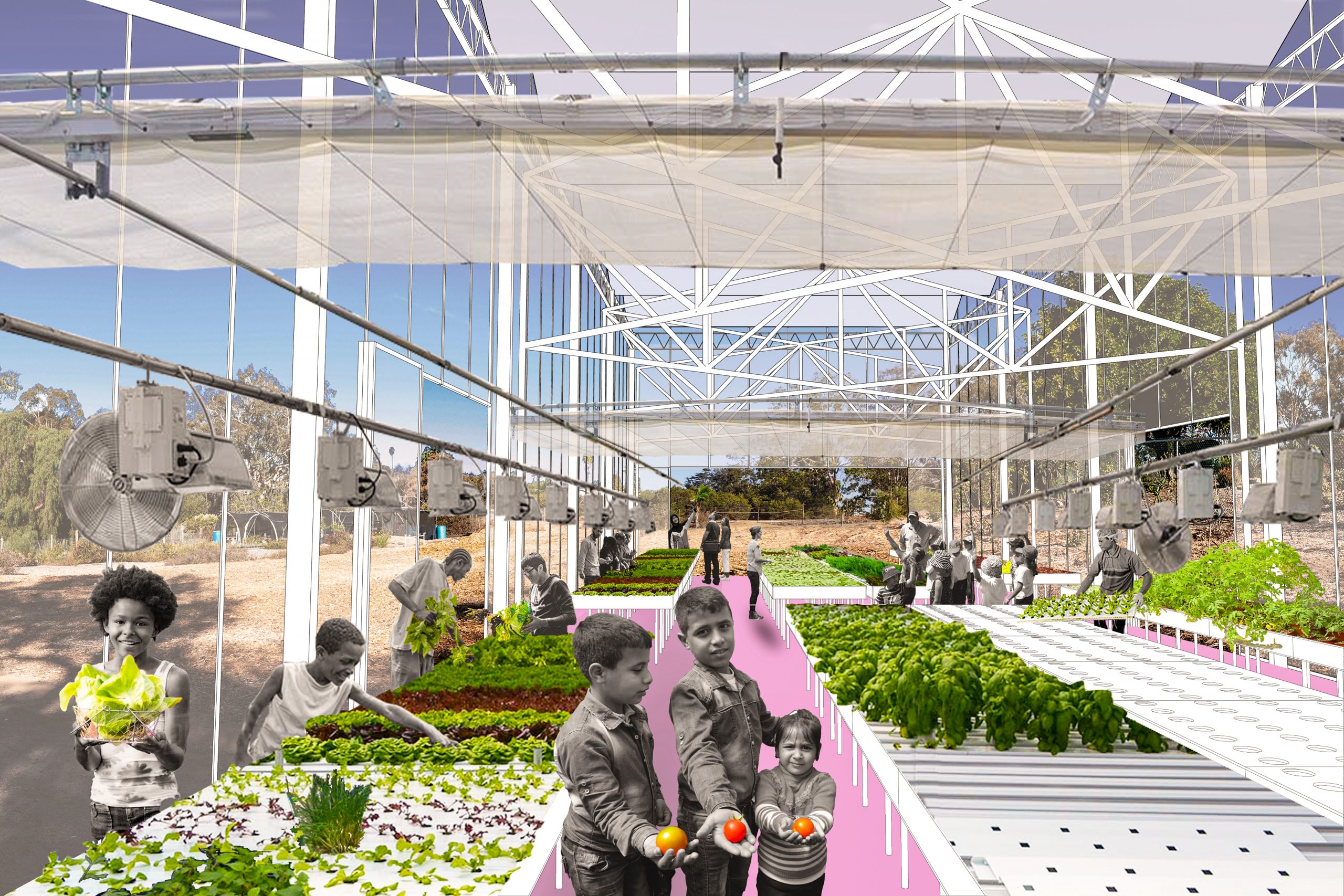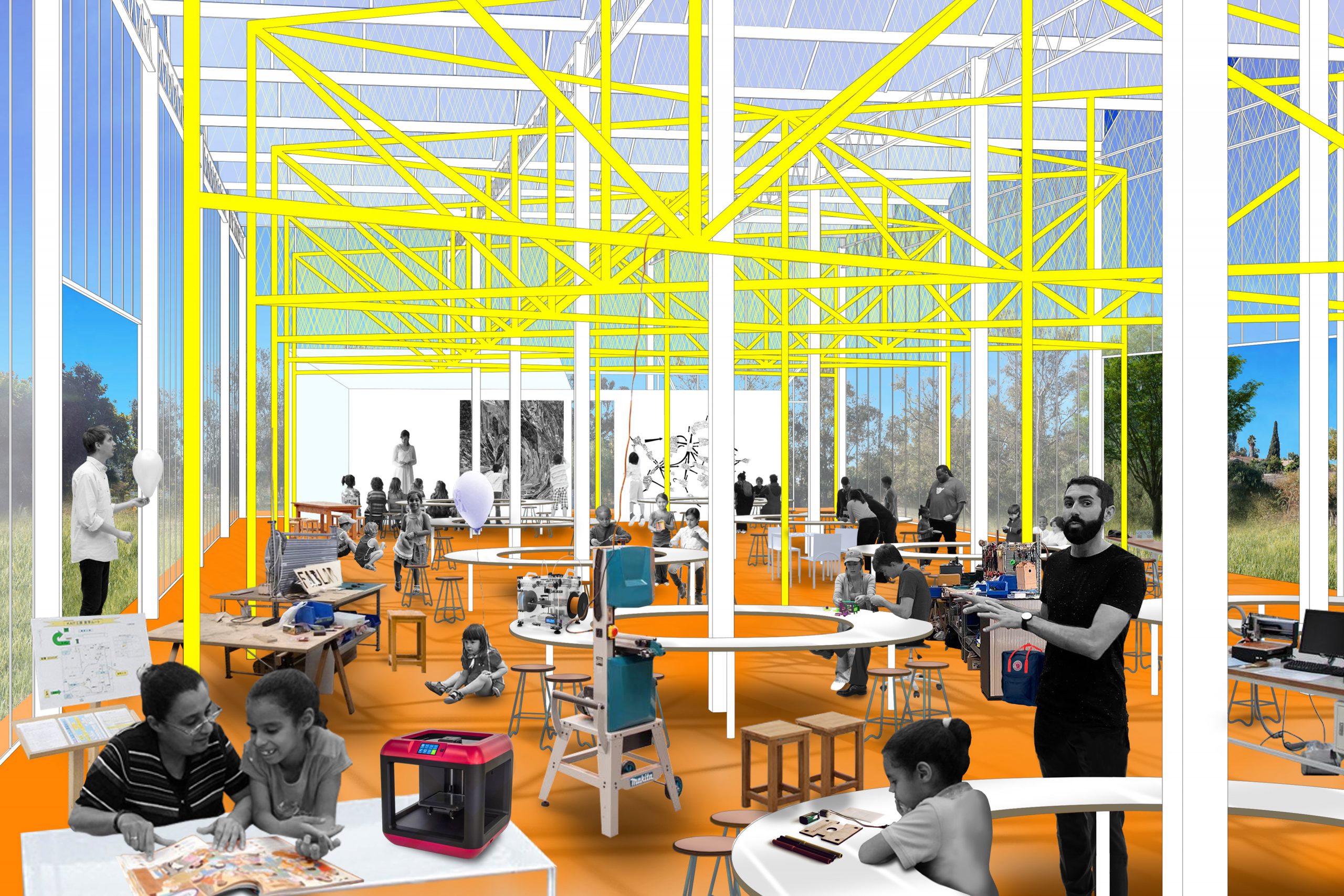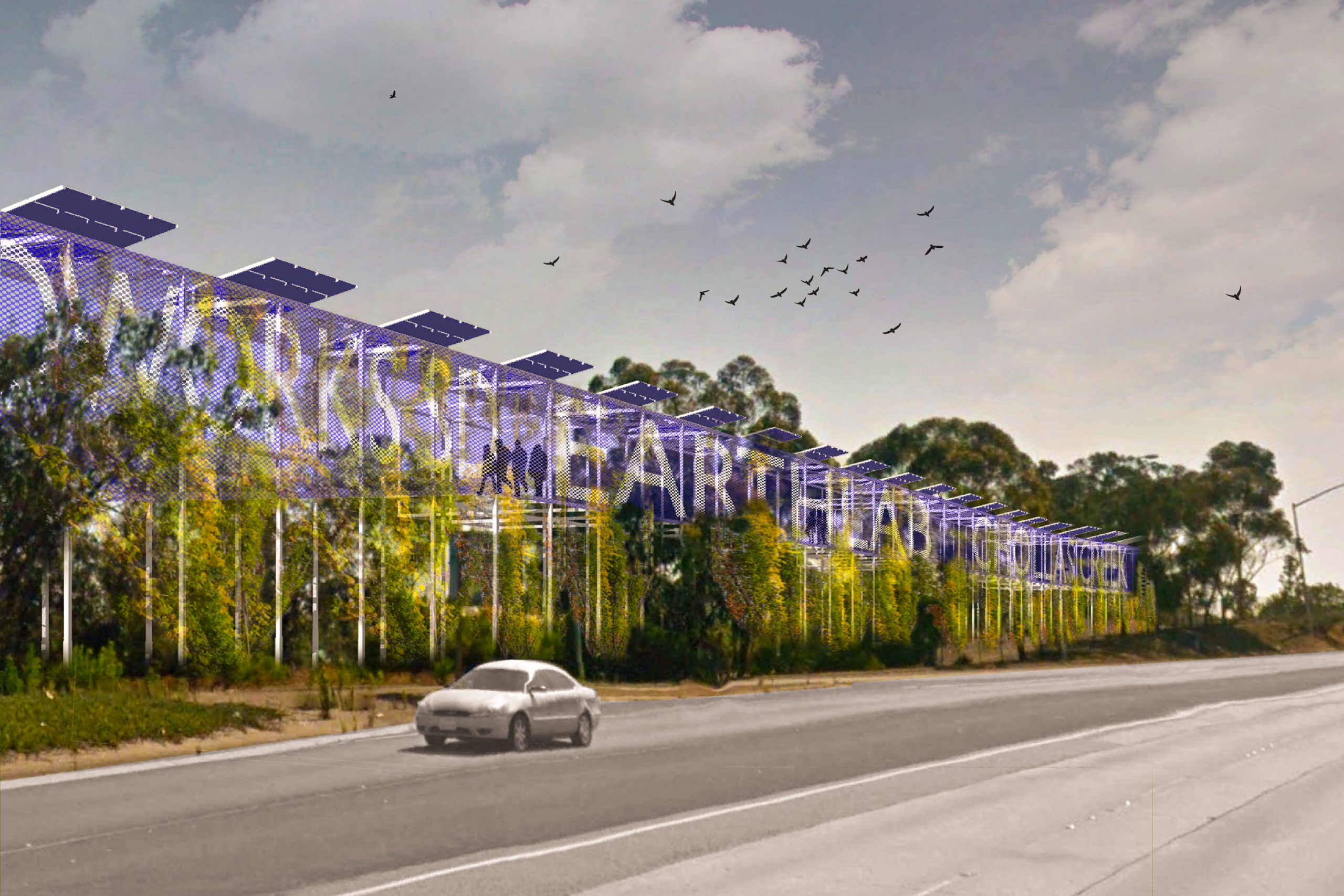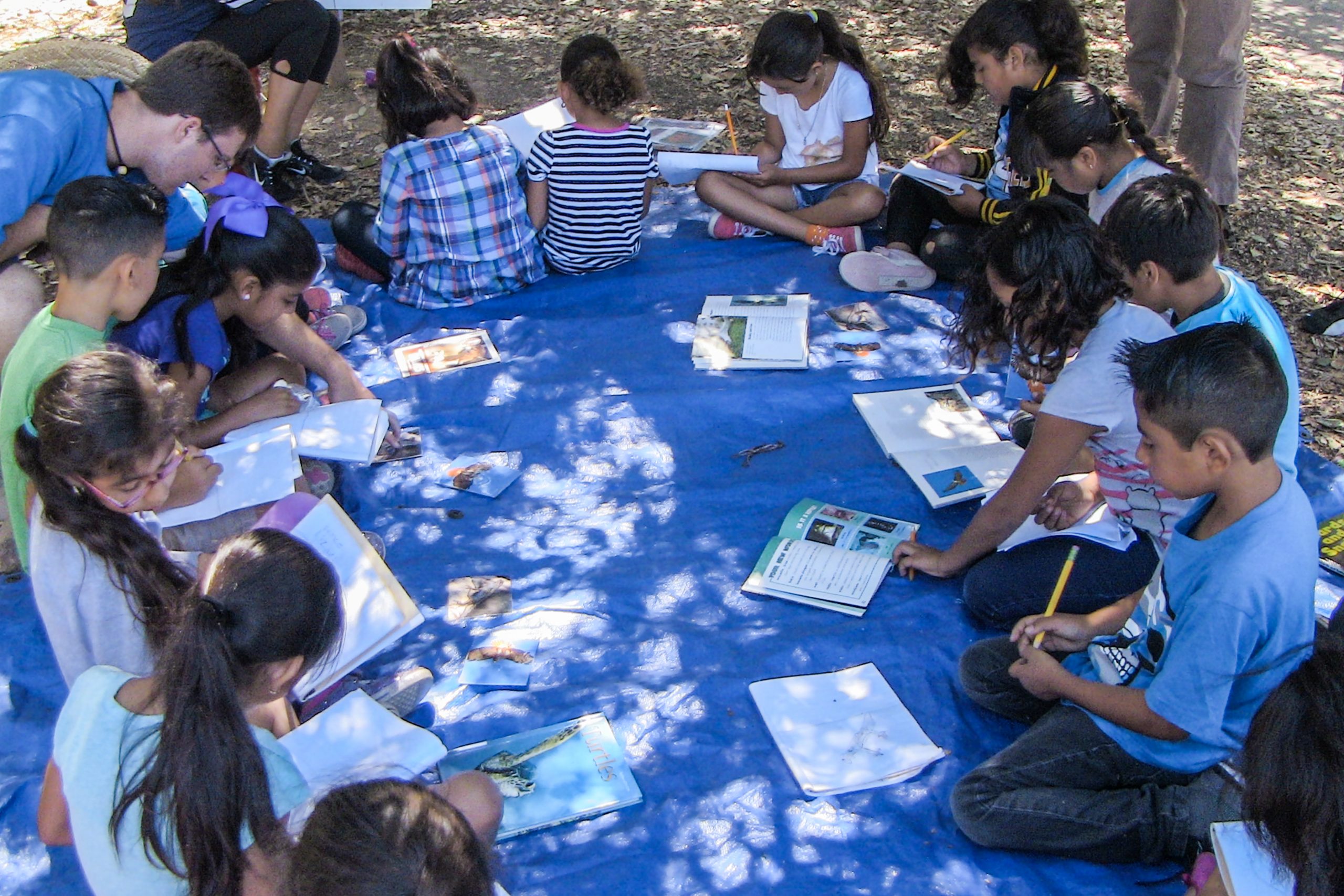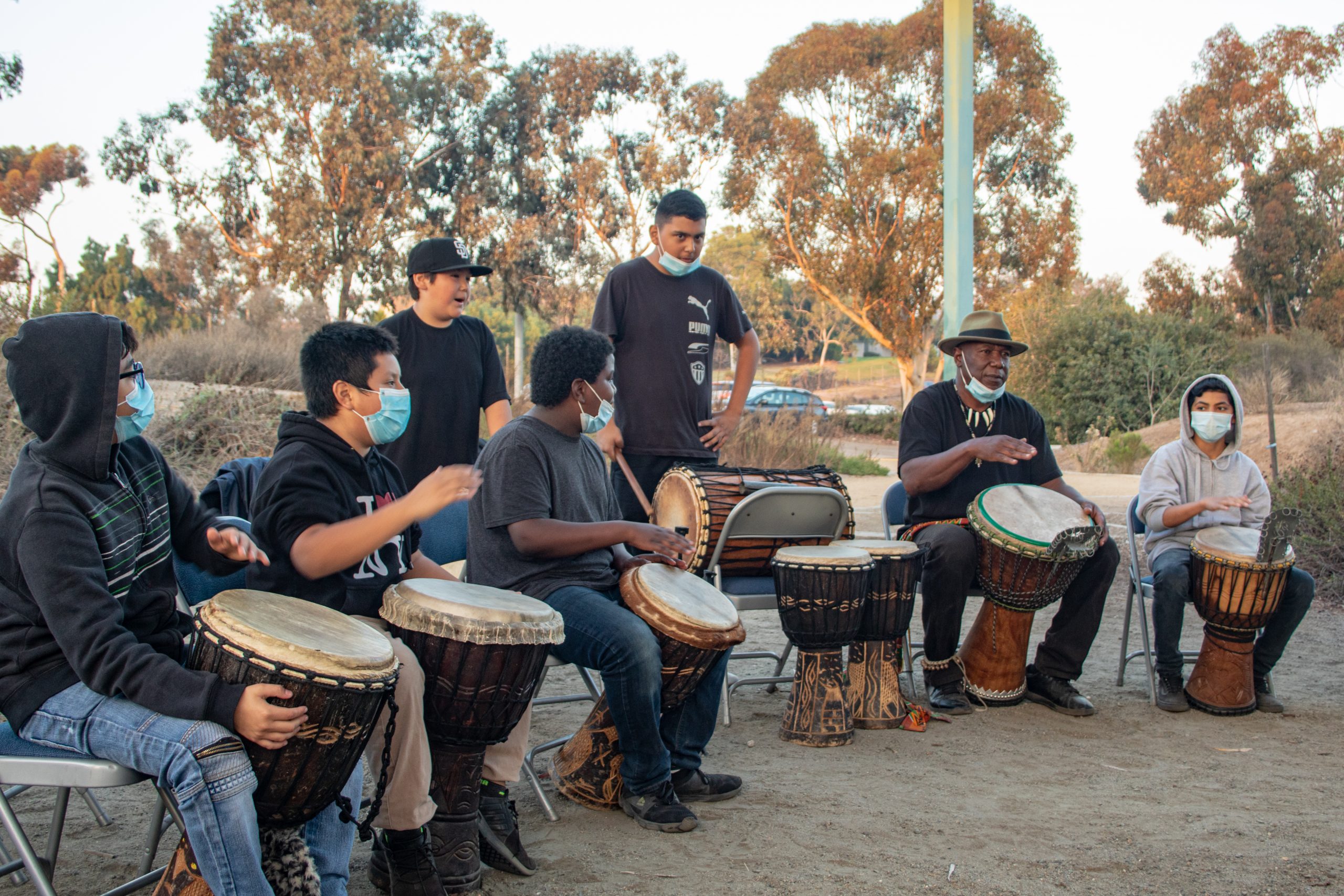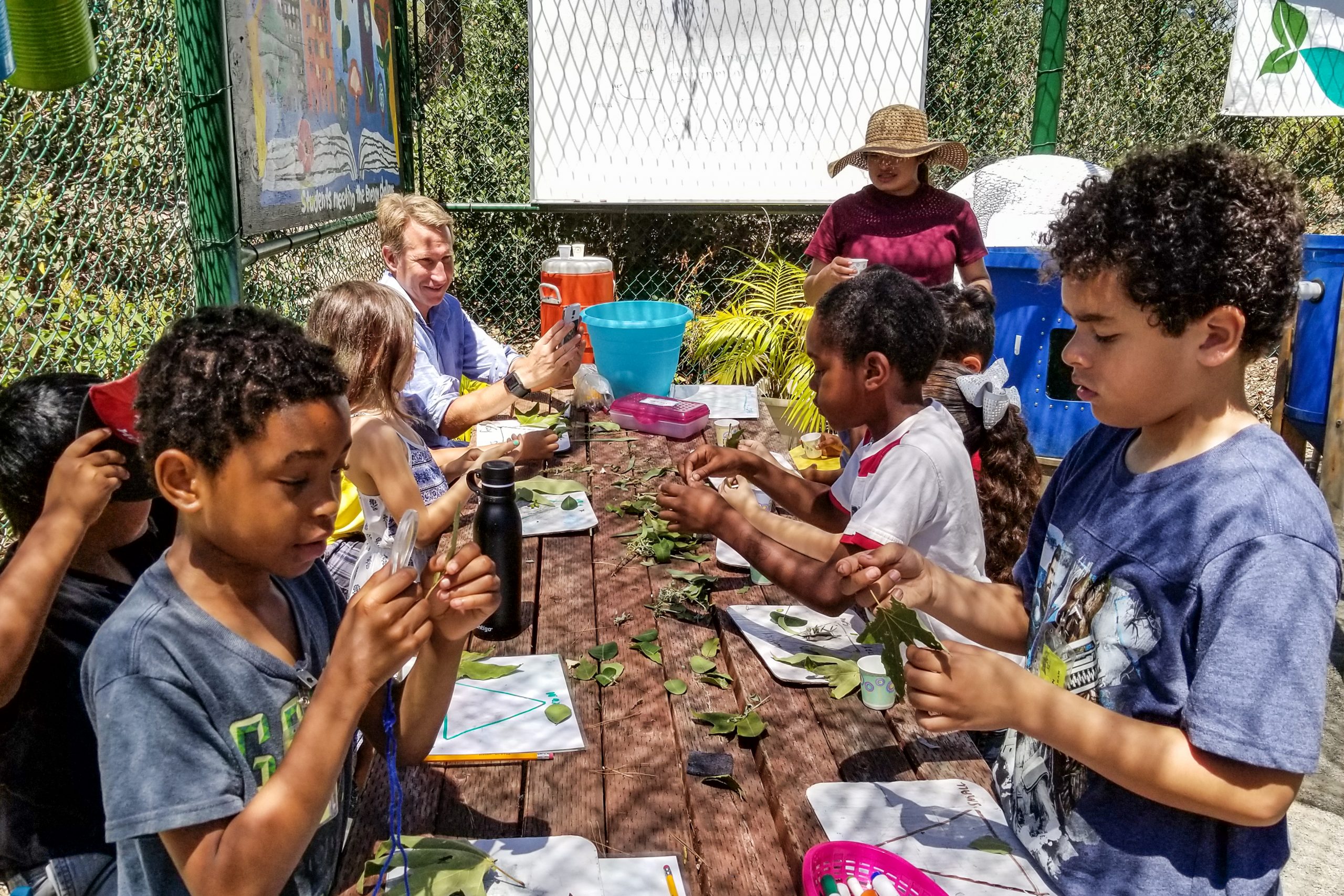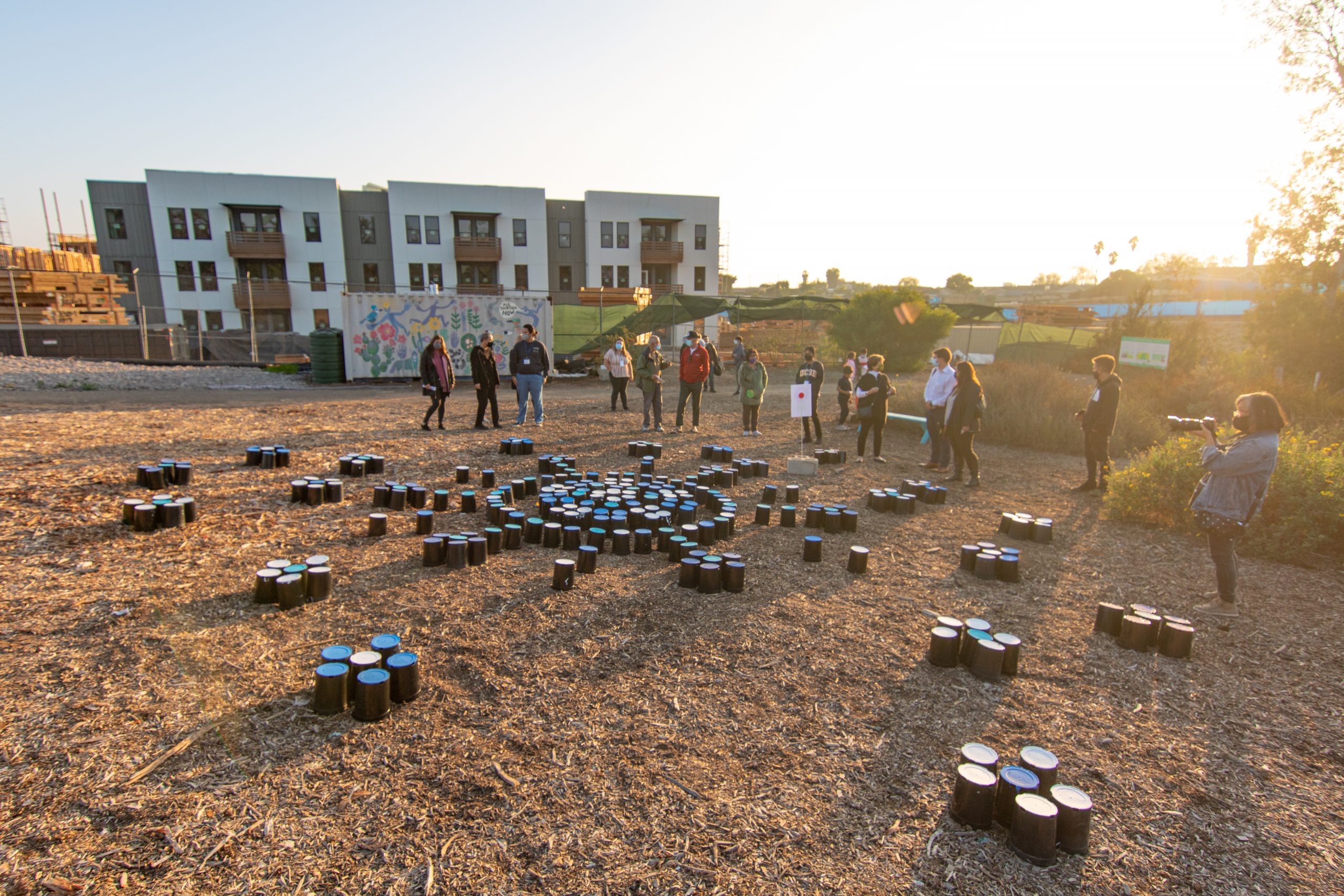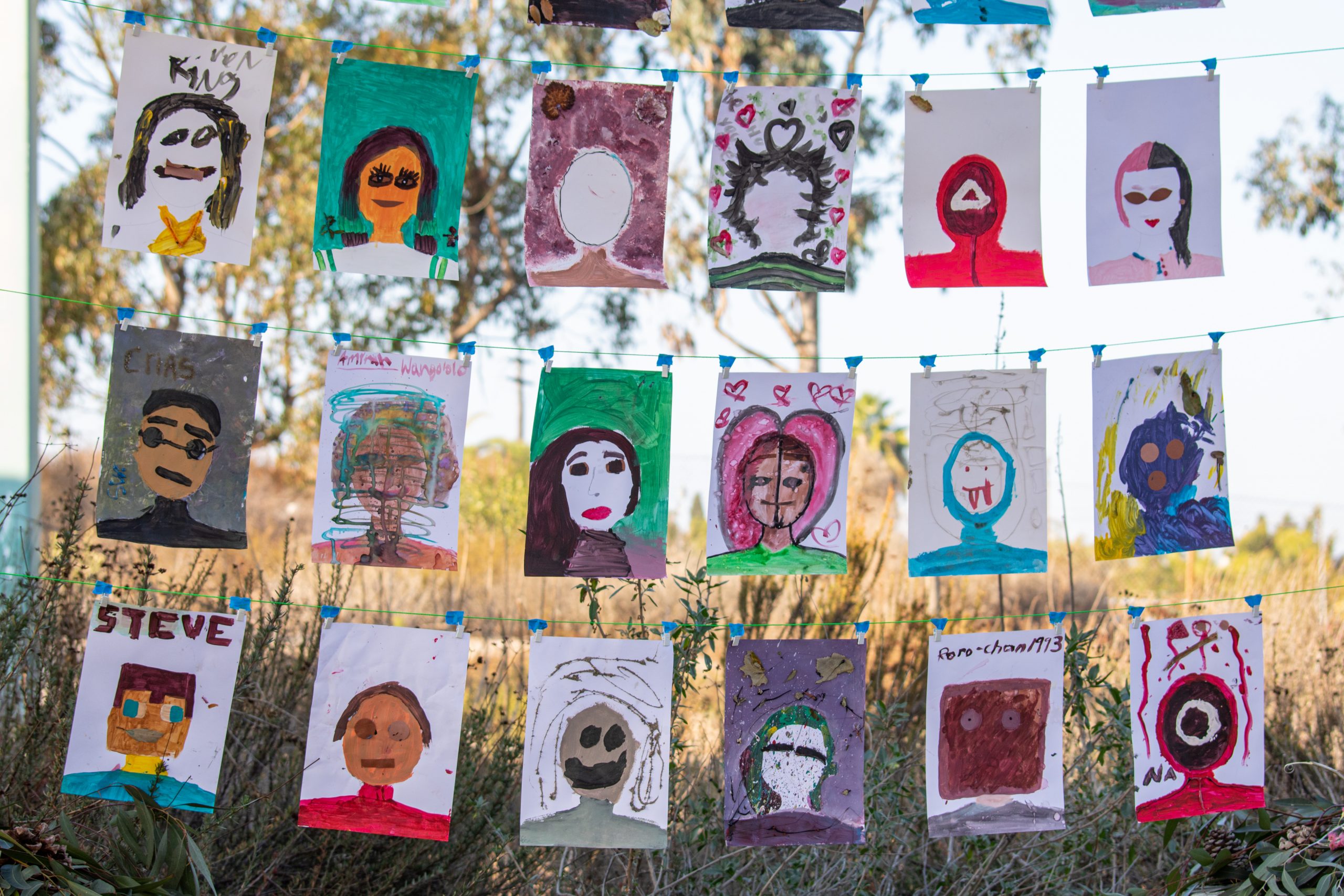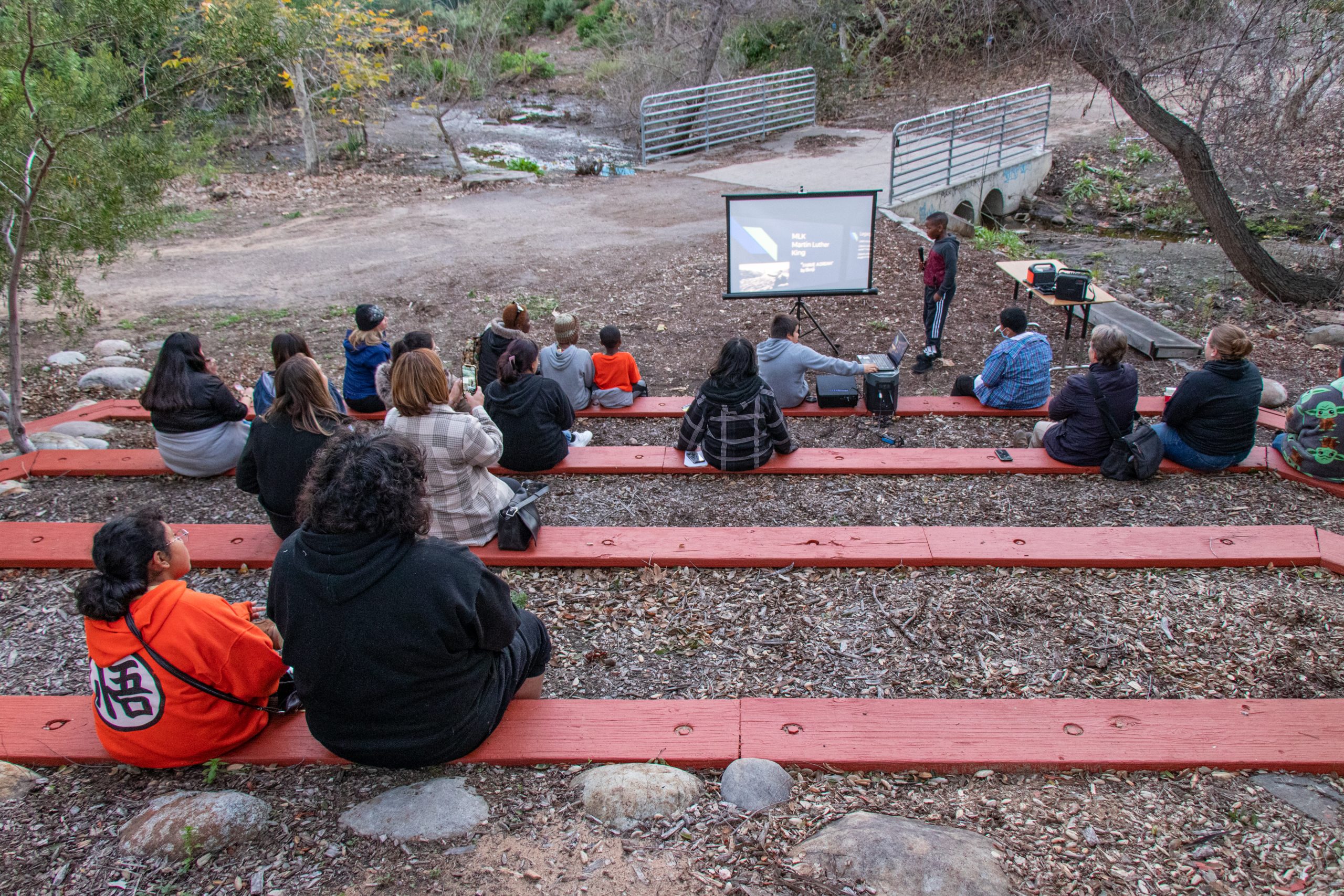UCSD-EarthLab
Community Station
Hands-on experiential learning in green spaces produces better educational outcomes in underserved communities
The UCSD-EarthLab Community Station is a 4-acre climate action park in the southeast San Diego neighborhoods of Encanto, designed for experiential outdoor education.
Location + Partnership
Encanto, San Diego, CA
Encanto is an underserved “environmental justice” community located in southeast San Diego, characterized by high unemployment, low educational attainment, food insecurity and cyclical poverty. EarthLab occupies a 4-acre parcel, owned by the San Diego Unified School District and granted to the EarthLab, to increase infrastructural and programmatic capacity of the six public schools within walking distance of the site.
Groundwork San Diego–Chollas Creek
The EarthLab is a partnership between UC San Diego and Groundwork San Diego, an environmental enhancement non-profit empowered by the City of San Diego to restore the Chollas Creek watershed and to improve the environment, economy and quality of life for the residents of Encanto.
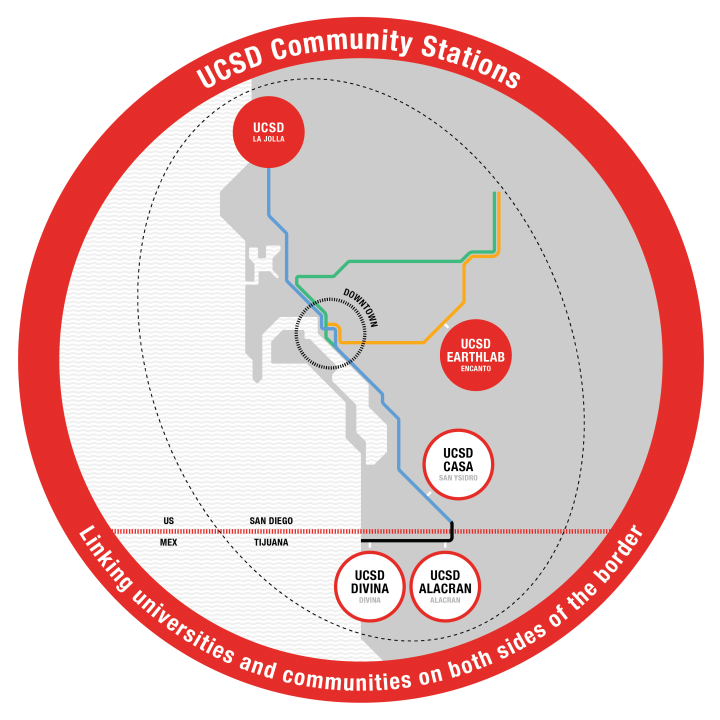
Physical Infrastructure
EarthLab Is an Outdoor Climate Action Park
Designed by leading informal science educators, climate scientists, environmental designers, architects and landscape architects, the EarthLab is comprised of learning stations that focus on energy, water and food; conservation infrastructure; and a field-based environmental design/makers lab. The Center on Global Justice is partnering with Groundwork San Diego and the San Diego Unified School District to update the EarthLab masterplan through a community-based participatory design process, funded by the Surdna Foundation.
We are partnering with Groundwork San Diego to transform a 4-acre site, owned by the San Diego Unified School District, into an open-air environmental classroom and climate action park. Leveraging the resources of leading regional education partners such as University of California, San Diego, the Fleet Science Center and the Birch Aquarium, and through the delivery of unique hands-on STEAM education, technical training and mentoring programs, EarthLab advances a new model of K-12 experiential environmental education for the youth of Encanto, and opens access to higher education, career pathways and quality jobs. The EarthLab places environmental education at the center of economic, energy, and health equity, inspiring the diverse residents of the Encanto neighborhoods to become stewards of their own environment and the planning of their communities.
Thousands of Encanto youth and their families already circulate through the EarthLab each year. As the new masterplan is advanced the EarthLab’s capacity will increase to serve as a K-12 resource for the 6 public schools within walking distance of the site, becoming the first Climate Action Park of its kind.
Community Design Process
The EarthLab Masterplan illustrates what can happen when a grass-roots environmental non-profit (Groundwork SD) in a disadvantaged community, a local school district (San Diego Unified School District and a research university (UC San Diego) partner to co-develop a new type of educational public space.
With the support of the Surdna Foundation, CGJ and Groundwork mobilized the community design process to envision the EarthLab programmatic and physical masterplan. We summoned diverse demographic groups across the Encanto neighborhoods, including community leaders, area residents, school teachers, businesses, faith-based institutions. These meetings produced the initial imagination and aspiration for the programmatic composition of The EarthLab Masterplan, the specific learning objectives and pedagogical strategies, as well as the physical environments and exhibits to support these programs and activities.
The participatory design process included a set of workshops with school leaders, educators, children and their families, industry representatives and design professionals to brainstorm preliminary design concepts. The EarthLab has been designed by leading informal science educators, climate action scientists, museum designers, architects and landscape architects.
Exhibits
The EarthLab Masterplan calls for the installation of six educational exhibits (activity stations) informed by food/water/energy topics under the overarching theme of climate action and organized through principles of indigenous practices. These exhibits are designed to support formal and informal learning modules at the EarthLab, and will elevate Groundwork’s theory of learning, as a model for other science educators seeking to integrate in-door (methodological) and out-door (experiential) learning. Specifically, these exhibits are designed with supporting tools, environments and playgrounds to guide students and users to: ask questions, define problems, plan and carry out investigations, analyze and interpret data, construct and explain experiences, develop and use replicable models, and design solutions to challenges that climate change excerpts in their environment.
All exhibits are designed as interactive-environments, flexible and adaptable spaces where different types of experiential educational activities (technology-conservation-culture) can co-exist, linking play and knowledge. Flexibility of use and adaptation is important so that even without direct guidance, visitors will engage with energy knowledge through self-play and interaction.
An important aspect of the exhibits is that all of them have been designed to facilitate their reproduction in miniature when students are back in their classrooms. Their formal attributes, geometric patterns, shapes and materials, etc., inform educational design tools and experiments that enable teachers to elaborate on the data that students have collected out-doors. The main design features of each of these exhibits/environments are shown here.
Social Infrastructure
An Experiential Model of Environmental Education
The EarthLab Method advances a new model of experiential environmental education for the youth of the Chollas Creek Watershed, and the larger San Diego community. Each year thousands youth and their families circulate through EarthLab, engaging in informal STEAM-based environmental education and climate action at neighborhood scale.
The EarthLab Method operates as a portfolio of lessons and activities designed to improve the scientific, ecological and cultural literacy of students. Learning like scientists, they reason using evidence; learning like ecologists, they experience the knowledge of nature and cultivate a desire to conserve valuable resources; and learning like artists, they are inspired to translate cultural indigenous traditions into practical tools for today’s environmental challenges. By linking technology and science (reason), ecology and conservation (empathy) and culture and arts (expression), the EarthLab Method aspires to integrate siloed forms of learning, and promote circulation between the formal classroom and the environmental design labs and outdoor activities that comprise Community Station programming.
Enhancing Classroom Learning
Research shows that underserved urban youth have less exposure to green spaces, and thus do not have essential opportunities to develop environmental empathy in the first ten years of life. These communities are also disproportionately impacted by climate change, and have the fewest resources to adapt. Environmental justice demands that we invest urgent resources and enhanced educational opportunities in these communities.
The research is clear: Getting kids into green spaces with hands-on field learning, produces better educational outcomes. This finding is particularly relevant in disadvantaged urban communities, where elementary and middle school students typically have less access to green space than their wealthier counterparts, and also experience the greatest STEM deficits in early education. Because these deficits are difficult to rectify after they happen, Groundwork San Diego is committed to delivering enhanced environmental education to urban youth at the EarthLab.
EarthLab gets young people beyond the four walls of the school and into green spaces, into the neighborhood, with hands-on, practical, inquiry-based exercises to supplement the California state standards-based curriculum they are learning in the classroom. By providing students with opportunities to participate in authentic science experiences, the EarthLab enhances their potential to meet and exceed state standards and supports the development of a more scientifically literate society.
Integrating Indigenous Knowledge
A central premise in our experiential education model is that science is embedded in the everyday life of communities. The EarthLab Model integrates a holistic approach to education, which includes both indigenous and scientific knowledge to understand and address urgent challenges like climate change. Cultural practices are integrated into our curriculum by translating traditional knowledges of indigenous communities into new models of experiential education, environmental practice, science and technology.
For example, the Chollas Watershed is a Kumeyaay sacred environment. The EarthLab exhibits integrate the Kumeyaay worldview and knowledges, as well as the traditional knowledges of indigenous peoples across the globe, to enrich our understanding of the impacts of climate change, as well as solutions to it. Climate action is a ripe opportunity for decolonizing knowledge, introducing children to different ways of viewing the world, and addressing its most urgent challenges.
Moving from STEM to STEAM
We believe that children at all grade-levels learn better when conventional STEM fields are combined with skills of visual literacy and aesthetic appreciation. For us, linking arts and humanities to science and math is an essential component of bridging the achievement gap in underserved urban neighborhoods. Through artistic drawing and the recording of empirical observations in “science notebooks”, students at the EarthLab cultivate both visual and scientific competency.
Seoul Biennial of Architecture and Urbanism, Seoul, September 2019. http://www.seoulbiennale.org/www_2019/index.php
Nature’s Nation: American Art and Environment traveling exhibition: Crystal Bridges, Bentonville, Arkansas, 2019. https://crystalbridges.org/exhibitions/natures-nation/
Critical Care: Architecture and Urbanism for a Broken Planet, Architekturzentrum Wien, Vienna, April 2019 https://www.azw.at/en/event/critical-care-architektur-und-urbanismus-fuer-einen-planeten-in-der-krise/
Nature’s Nation: American Art and Environment, Princeton University Art Museum, Princeton, September 2018. https://artmuseum.princeton.edu/art/exhibitions/2818
Forman, F., Solomon, G., Morello-Frosch, R., & Pezzoli, K, Chapter 8. “Bending the Curve and Closing the Gap: Climate Justice and Public Health”. Collabra, 2(1), 22. Oakland: University of California Press, 2016. DOI: http://doi.org/10.1525/collabra.67


